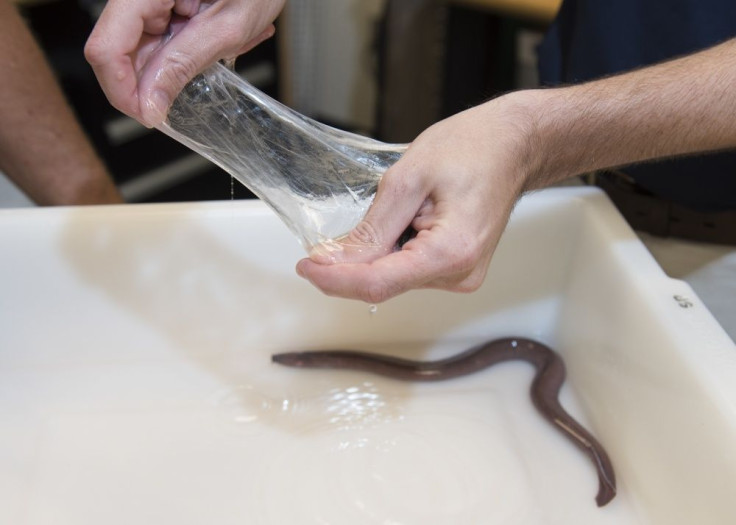Military Slime: Navy Creates Hagfish-Inspired Biomaterial To Deter Enemy Vessels

Seeking inspiration from an eel-like deep-sea fish, the U.S. Navy has created a unique biomaterial, one that could be leveraged to deter enemy vessels without employing conventional techniques.
The material, as the researchers described, would swell up after coming in contact with seawater and clog the propellers of an enemy boat, stopping it midway. Basically, it works just like the natural slime secreted by a hagfish living on the ocean floor.
A hagfish, as many would know, is an eel-shaped deep sea creature. It has remained unchanged for nearly 300 million years and is the only known animal to have a skull but no vertebral column. However, despite several wide-ranging features, the ability of this creature to produce a sticky slime has drawn a lot of attention.
When a hagfish crosses path with an enemy like a small shark or crab, it secretes slime — a fibrous mucus-like material — from its glands to hunt or protect itself. The material comes in contact with water and grows 10,000 times its initial volume. This way, it clogs up the gills of the targeted fish, leaving it to suffocate and sometimes even die.
The slime, as the team described, is composed of two protein-based elements named thread and mucin. The coiled thread works like a spring and starts expanding immediately after coming in touch with water, while the mucin binds to water and restricts the flow of liquid between the microchannels created by the thread.
“The interaction between the thread, mucin, and seawater creates a three-dimensional, viscoelastic network. Over time, the thread begins to collapse on itself, causing the slime to slowly dissipate,” materials engineer Ryan Kincer said in a navy statement.
The hagfish slime thread had all the qualities of being a synthetic military defense tool. It had mechanical properties similar to Kevlar, a synthetic fiber used for reinforcing in rubber products and gear. This prompted Kincer to use capabilities and recreate something similar.
"For the U.S. Navy to have its hands on it or a material that acts similar would be beneficial,” the engineer added. “From a tactical standpoint, it would be interesting to have a material that can change the properties of the water at dilute concentrations in a matter of seconds."
So, they used alpha and gamma proteins of the Pacific hagfish and combined them rapidly in a cross-linking solution. The work resulted in the creation of the synthetic threads of the manmade slime for stopping enemy vessels.
The research is still in progress and the team is exploring ways to improve the material’s attachment capability, its response to different environments, and potential delivery mechanisms. But, once fully ready, the material could be an effective, non-lethal method to deter enemies, according to the researchers.
"The synthetic hagfish slime may be used for ballistics protection, firefighting, anti-fouling, diver protection, or anti-shark spray," said Josh Kogot, another researcher working on the synthetic slime, added. "The possibilities are endless."
© Copyright IBTimes 2024. All rights reserved.





















